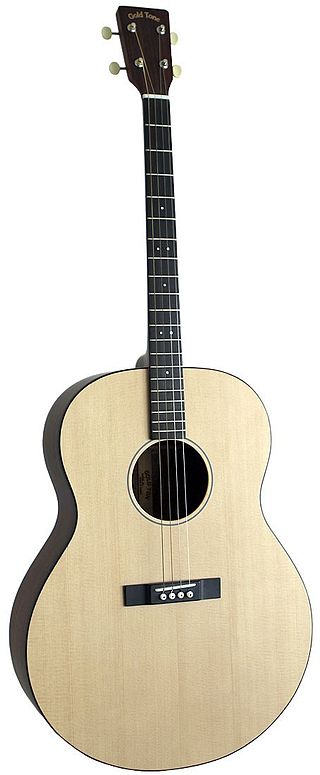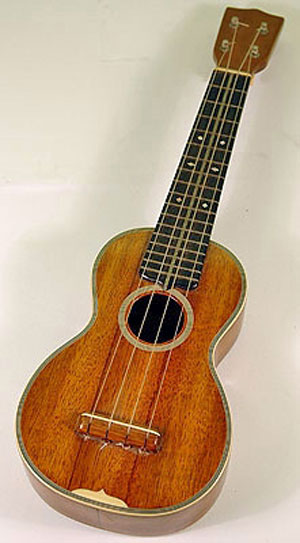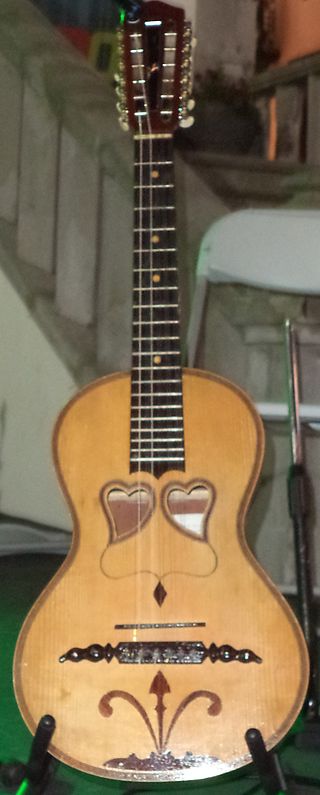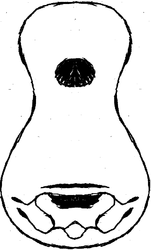
A mandolin is a stringed musical instrument in the lute family and is generally plucked with a pick. It most commonly has four courses of doubled strings tuned in unison, thus giving a total of eight strings. A variety of string types are used, with steel strings being the most common and usually the least expensive. The courses are typically tuned in an interval of perfect fifths, with the same tuning as a violin. Also, like the violin, it is the soprano member of a family that includes the mandola, octave mandolin, mandocello and mandobass.

A twelve-string guitar is a steel-string guitar with 12 strings in six courses, which produces a thicker, more ringing tone than a standard six-string guitar. Typically, the strings of the lower four courses are tuned in octaves, with those of the upper two courses tuned in unison. The gap between the strings within each dual-string course is narrow, and the strings of each course are fretted and plucked as a single unit. The neck is wider, to accommodate the extra strings, and is similar to the width of a classical guitar neck. The sound, particularly on acoustic instruments, is fuller and more harmonically resonant than six-string instruments. The 12-string guitar can be played like a 6-string guitar as players still use the same notes, chords and guitar techniques like a standard 6-string guitar, but advanced techniques might be tough as players need to play or pluck two strings simultaneously.

The Appalachian dulcimer is a fretted string instrument of the zither family, typically with three or four strings, originally played in the Appalachian region of the United States. The body extends the length of the fingerboard, and its fretting is generally diatonic.

The seven-string guitar adds one additional string to the more common six-string guitar, commonly used to extend the bass range or also to extend the treble range.

A tiple, is a plucked typically 12-string chordophone of the guitar family. A tiple player is called a tiplista. The first mention of the tiple comes from musicologist Pablo Minguet e Irol in 1752. Although many variations of the instrument exist, the tiple is mostly associated with Colombia, and is considered the national instrument. The Puerto Rican version characteristically has fewer strings, as do variants from Cuba, Mallorca, and elsewhere among countries of Hispanic origin.

The Irish bouzouki is an adaptation of the Greek bouzouki. The newer Greek tetrachordo bouzouki was introduced into Irish traditional music in the mid-1960s by Johnny Moynihan of the folk group Sweeney's Men, who retuned it from its traditional Greek tuning C³F³A³D⁴ to G²D³A³D⁴, a tuning he had pioneered previously on the mandolin. Alec Finn, first in the Cana Band and subsequently in De Dannan, introduced the first Greek trichordo (3 course) bouzouki into Irish music.

The tenor guitar or four-string guitar is a slightly smaller, four-string relative of the steel-string acoustic guitar or electric guitar. The instrument was initially developed in its acoustic form by Gibson and C.F. Martin so that players of the four-string tenor banjo could double on guitar.
In music, standard tuning refers to the typical tuning of a string instrument. This notion is contrary to that of scordatura, i.e. an alternate tuning designated to modify either the timbre or technical capabilities of the desired instrument.
The cuatro is a family of Latin American string instruments played in Colombia, Puerto Rico, Venezuela and other Latin American countries. It is derived from the Spanish guitar. Although some have viola-like shapes, most cuatros resemble a small to mid-sized classical guitar. In Puerto Rico and Venezuela, the cuatro is an ensemble instrument for secular and religious music, and is played at parties and traditional gatherings.

On a stringed instrument, a break in an otherwise ascending order of string pitches is known as a re-entry. A re-entrant tuning, therefore, is a tuning which does not order all the strings from the lowest pitch to the highest pitch.

Laúd is a plectrum-plucked chordophone from Spain, played also in diaspora countries such as Cuba and the Philippines.
The octophone is a stringed musical instrument related to the mandola family resembling an octave mandolin. It was marketed by Regal Musical Instrument Company, who introduced it 21 January 1928, as an "eight-purpose instrument".

The Guitolão is a chordophone designed by Portuguese luthier Gilberto Grácio. It is a baritone version of the Portuguese guitar.

The viola amarantina is a stringed musical instrument from Amarante, Northern Portugal. It is also named viola de dois corações because of the two heart-shaped frontal openings. It has 10 strings in 5 courses. The strings are made of steel. It is tuned A3 A3, F# F#, B2 B3, G2 G3, D2 D3.
The Guitarra de golpe is a stringed musical instrument from Mexico. It has 5 nylon strings in 5 courses. The headstock traditionally has a traditional shape that is designed to look like a stylised owl with wooden pegs, but nowadays this is sometimes replaced with a guitar or vihuela style headstock with machine heads. For a while during the 20th century, the Guitarra De Golpe fell into disuse in traditional Mariachi groups, and was replaced by the Classical guitar. It has now however been revived. It is still an essential part of the "conjuntos de arpa" from Michoacán.

The viola beiroa is a stringed musical instrument from Castelo Branco, Eastern Portugal. It has 12 strings in 7 courses. The strings are made of steel. It is tuned D3, D3, A3 A2, D3 D2, G3 G2, B3 B3, D3 D3. The scale length is about 520mm.

Viola da terra is a stringed musical instrument from the islands of the Azores, closely associated with the saudade genre of Portuguese music. Its 12 or 15 metal strings are arranged in either five or six courses.
The Viola de arame is a stringed musical instrument from the Portuguese island of Madeira. It has 9 strings in 5 courses. The strings are made of steel.
The viola da Terceira is a stringed musical instrument of the guitar family, from the Portuguese islands of the archipelago of the Azores, associated with the island of Terceira.

The Algerian mandole is a steel-string fretted instrument resembling an elongated mandolin, widely used in Algerian music such as Chaabi, Kabyle music and Nuubaat.













